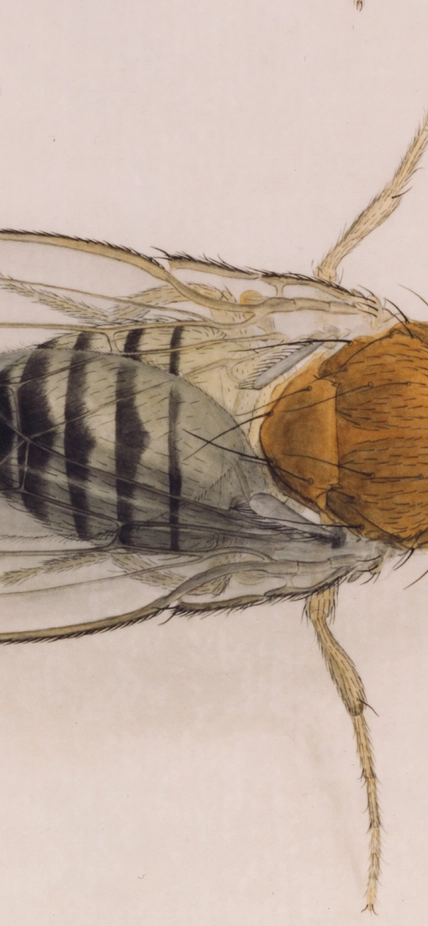Baltimore, MD--The fruit fly Drosophila melanogaster is a powerful model organism for studying animal and human development and disease. It is low cost, generates rapidly, and there are many tools to genetically modify its cells. One tool is called the Gal4/UAS two-component activation system. It is a biochemical method used to study the process of turning a gene on (gene expression) and gene function. Although it has been a mainstay of Drosophila genetics for twenty-five years, it only functions effectively in non-reproductive cells, not in egg-producing cells. It has not been known why. Now, Carnegie’s Steven DeLuca and Allan Spradling have discovered why and the have developed a new tool that can work in both cell types. The research is published in the June 2018 Genetics.
The Gal4 gene is a transcription factor. Transcription factors encode proteins that turn genes on. The Gal4 protein recognizes a so-called upstream activator sequence (UAS), which can induce the expression of a gene of interest. A special version of the UAS was made at the Department of Embryology in 1998, called UASp, to work during egg-cell development. But the fact that different tools are needed for non-reproductive cells and egg-forming cells has been a major limitation.
The original pUASt vector—a molecule that ferries foreign genetic material into another cell—contains a promotor called Hsp70. As the name suggests, promotors are bits of DNA that initiate or promote gene transcription. Researchers have developed several varieties to improve its expression. Hsp70 is a member of a family of proteins with similar structures in most all living organisms and are an important for protein folding and for protecting cells from stress. The mechanisms of protein folding are vital to life and to understanding diseases.
The variations of UAS, however, did not correct the major problem of poor genetic activity in the female egg-producing system compared with non-reproductive tissues. The main stumbling block to obtaining a widely effective GAL4 vector has been the lack of understanding why UASt functions poorly in egg-producing cells and the lack of research comparing UASp and UASt promoters.
DeLuca and Spradling studied the differences between the UASp and UASt promoters. Their research agreed with previous reports that UASt worked better than UASp in all non-reproductive tissues while UASp worked better in the female egg-producing system.
They also looked at the reason for the extremely weak UASt expression in the female reproductive system. The evidence indicated that non-coding RNA molecules (called piRNA ) orchestrated the silencing that limited UASt expression.
They then looked at where these UASt-piRNAs originated by testing to see if Hsp70 piRNAs were responsible for silencing. Their results strongly indicated that UASt is normally silenced by Hsp70 piRNAs and that UASt is better than UASp in cells lacking Hsp70 piRNAs.
“We next attempted to create a new version of the UAS expression vector that works well in both the non-reproductive cells and the egg-producing system, “remarked DeLuca. “We hypothesized that Hsp70 piRNAs might recognize UASt RNA to initiate piRNA silencing. To prevent Hsp70 piRNAs from recognizing UASt RNA, we trimmed down the UASt vector’s nucleotides—the basic units of DNA and RNA—to be shorter than a single piRNA. We went from 213 nucleotides to 19 nucleotides. We named this shortened variant ‘UASz,’because we hoped it would be the last one anyone would make!”
The scientists found that UASz was expressed about 4 times higher than UASp at all stages in the egg-producing system.
Spradling remarked, “UASz is a superior expression vector over UASp in all tissues, and it is equivalent to UASt in many, but not all, non-reproductive tissues. It is an unequivocal upgrade for all applications. This is a major hurdle overcome for reproductive studies. We hope it will unlock the floodgates of research in this area and others.”
-------
This work was supported by the Helen Hay Whitney Foundation (E.G.) and Howard Hughes Medical Institute, in addition to Carnegie.
